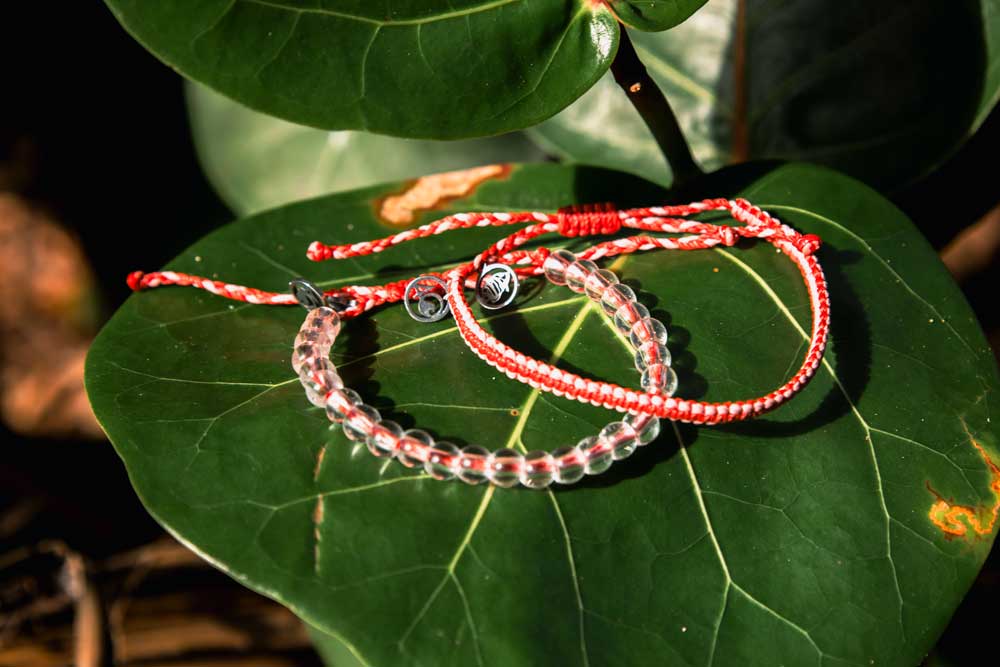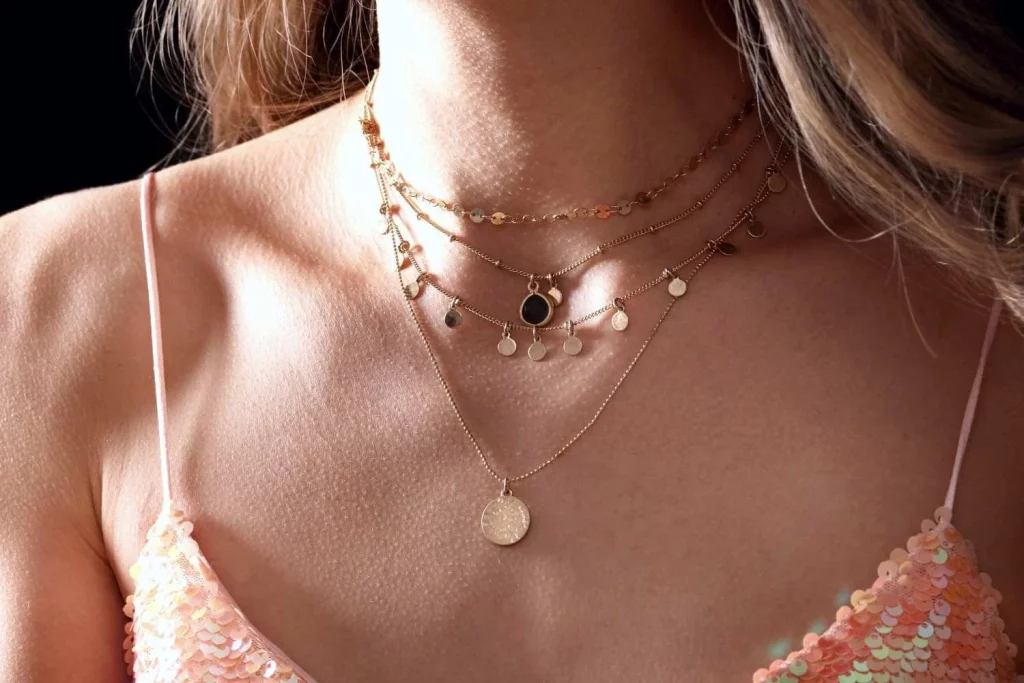Introduction
In recent years, sustainability has become a major focus in virtually every industry, and the jewellery world is no exception. Consumers are increasingly aware of the environmental and social impact of their purchases, leading to a surge in demand for sustainable and ethical jewellery. Beyond aesthetics, modern buyers are looking for pieces that reflect their values, from responsibly sourced metals to fair labor practices.
What is Sustainable and Ethical Jewellery?

Sustainable jewellery refers to pieces crafted with minimal environmental impact. This can include:
- Recycled metals – Gold, silver, and platinum sourced from previously used materials.
- Eco-friendly mining – Practices that reduce water usage, energy consumption, and habitat disruption.
- Lab-grown gemstones – Synthetic diamonds and other stones that replicate natural ones without the ecological footprint of mining.
Ethical jewellery focuses on human welfare, ensuring fair labor practices, safe working conditions, and transparent sourcing. Together, sustainability and ethics form a movement that prioritizes people and the planet alongside beauty.
Why Consumers Are Choosing Sustainable Jewellery
There are several reasons driving the popularity of ethical jewellery:
1. Environmental Responsibility
Traditional mining and gemstone extraction often have significant ecological consequences, including deforestation, water contamination, and carbon emissions. By opting for recycled metals or lab-grown stones, consumers reduce their environmental impact.
2. Social Awareness
Many buyers are concerned about the labor conditions in mining communities. Ethical jewellery ensures fair wages, safe working conditions, and the absence of child labor, allowing consumers to make purchases aligned with their moral values.
3. Transparency and Trust
Modern buyers demand transparency. Brands that provide clear sourcing information, third-party certifications, and traceable supply chains earn consumer trust, reinforcing loyalty and long-term brand value.
4. Quality and Innovation
Sustainable jewellery often involves innovative practices, such as using reclaimed metals, ethically sourced gemstones, and modern crafting techniques. These pieces are not only environmentally friendly but also high-quality and unique.
Key Elements of Sustainable Jewellery
When shopping for sustainable jewellery, consider the following:
1. Recycled and Responsibly Sourced Metals
Look for gold, silver, or platinum sourced from recycled materials or verified sustainable mines. Certifications such as Fairmined or Fairtrade Gold can provide assurance.
2. Ethically Sourced Gemstones
Seek out gemstones that are traceable and conflict-free. Lab-grown diamonds are an excellent alternative, offering the same sparkle with a smaller environmental footprint.
3. Eco-Friendly Craftsmanship
Sustainable brands often use low-energy production methods, reduce waste, and recycle scraps, contributing to greener practices.
4. Transparency in Supply Chains
The best ethical jewellery brands provide detailed information about the origin of materials, working conditions, and manufacturing processes. This allows consumers to make informed, responsible choices.
The Rise of Lab-Grown Diamonds and Gemstones
Lab-grown diamonds and gemstones are revolutionizing the jewellery industry, particularly in the context of sustainability and ethical sourcing. Unlike traditionally mined stones, lab-grown gems are created in controlled environments using advanced technological processes that replicate the natural conditions under which gemstones form. This approach drastically reduces the environmental footprint: mining operations, which often involve deforestation, water pollution, and energy-intensive excavation, are largely avoided. As a result, lab-grown gems conserve natural resources and minimize ecological disruption.
From a social perspective, lab-grown gemstones address many ethical concerns linked to traditional mining. Exploitative labor practices, unsafe working conditions, and conflict financing are major issues in some mining regions. By sourcing stones from laboratories rather than mines, consumers can enjoy high-quality gemstones without contributing to these human rights and ethical challenges.
Creatively, lab-grown gemstones expand the possibilities for jewellery designers. Because the growth environment can be controlled precisely, designers can experiment with a wider range of colors, clarity levels, and unique cuts that are rare or impossible to achieve with natural stones. For instance, vibrant colored diamonds—like pink, blue, or yellow—that occur naturally in limited quantities can be produced consistently in labs. Similarly, precision cutting techniques allow for innovative shapes and facets, enabling truly one-of-a-kind pieces. In essence, lab-grown gems combine beauty, ethics, and innovation, making them a central pillar of modern sustainable jewellery.
How Brands Are Responding
Many jewellery brands have recognized the importance of ethical practices. From small artisanal workshops to luxury names, companies are adopting certifications, promoting transparency, and marketing their pieces as responsible choices. Brands that embrace sustainability often highlight:
- Recycled metals and ethical gemstones.
- Minimalist packaging and eco-conscious shipping.
- Community initiatives supporting mining regions or artisans.
This approach not only appeals to eco-conscious consumers but also sets a new standard in the jewellery industry.
Benefits of Choosing Sustainable Jewellery
1. Positive Environmental Impact
Sustainable and ethical jewellery significantly reduces the environmental footprint compared to traditional practices. By using recycled metals, lab-grown gemstones, and eco-friendly production methods, brands minimize resource consumption, energy usage, and habitat disruption. Avoiding destructive mining practices prevents deforestation, soil erosion, and water contamination, helping preserve ecosystems. Even packaging and shipping choices often reflect eco-conscious practices, reducing waste and carbon emissions. In this way, sustainable jewellery allows consumers to enjoy luxury while actively supporting environmental conservation.
2. Social Responsibility
Ethical jewellery ensures that the people behind the products are treated fairly. Artisans and miners receive fair wages, work under safe conditions, and are not subjected to exploitative labor practices or child labor. Transparent supply chains allow consumers to trace the origins of metals and gemstones, ensuring their purchases support communities rather than perpetuate social injustice. This commitment to human welfare gives jewellery a deeper meaning, transforming it from a mere accessory into a symbol of ethical consumption.
3. Unique Pieces
Many sustainable jewellery brands prioritize creativity and craftsmanship. By focusing on artisanal techniques, innovative designs, and customizable options, they produce distinctive pieces that stand out from mass-produced items. Whether it’s a hand-carved setting, an unusual gemstone combination, or a bespoke design, these pieces reflect individuality and personal expression. Consumers not only get eco-friendly jewellery but also enjoy truly one-of-a-kind accessories that tell a story.
4. Long-Term Value
Sustainable and ethical jewellery often carries both emotional and financial value. Pieces made from responsibly sourced metals and gemstones are durable and maintain their quality over time, making them worthwhile investments. Additionally, the ethical and environmental principles behind each piece enhance its sentimental worth. Owning jewellery that supports fair labor, protects the planet, and embodies thoughtful craftsmanship gives consumers pride in their purchase—making it more than just a material possession.
Challenges and Considerations
While sustainable jewellery is gaining popularity, there are some challenges to keep in mind:
- Cost – Ethical and lab-grown products may be more expensive upfront, though they often offer better long-term value.
- Awareness – Not all consumers are familiar with certifications or what defines “sustainable,” which can make decision-making confusing.
- Availability – Depending on location, access to verified sustainable jewellery may be limited, though online marketplaces have helped bridge this gap.
Despite these challenges, the movement is growing rapidly, fueled by consumer demand and global awareness.
Also Read: How to Spot Authentic Precious Stones from Fakes
Final Thoughts
Sustainable and ethical jewellery represents a shift in consumer mindset—from buying purely for aesthetics to considering the environmental and social impact of each purchase. By choosing pieces that prioritize responsible sourcing, fair labor, and eco-friendly practices, buyers can enjoy beautiful jewellery while supporting a better world.
Whether it’s a recycled gold ring, a lab-grown diamond pendant, or a handmade bracelet, sustainable jewellery allows you to wear your values proudly. In an age where conscious consumption is increasingly important, choosing ethical pieces isn’t just a trend—it’s the future of jewellery.

